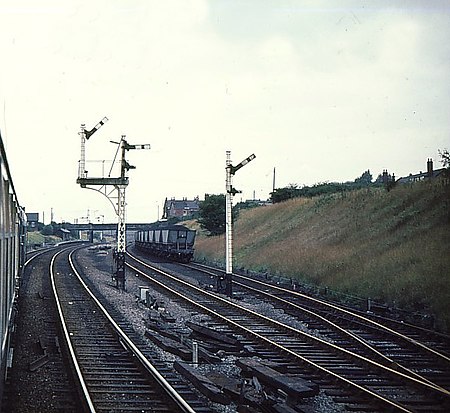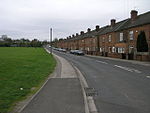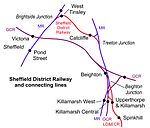The Battle of Orgreave was a violent confrontation on 18 June 1984 between pickets and officers of the South Yorkshire Police (SYP) and other police forces, including the Metropolitan Police, at a British Steel Corporation (BSC) coking plant at Orgreave, in Rotherham, South Yorkshire, England. It was a pivotal event in the 1984–1985 UK miners' strike, and one of the most violent clashes in British industrial history.Journalist Alastair Stewart has characterised it as "a defining and ghastly moment" that "changed, forever, the conduct of industrial relations and how this country functions as an economy and as a democracy". Most media reports at the time depicted it as "an act of self-defence by police who had come under attack". In 2015, the Independent Police Complaints Commission (IPCC) reported that there was "evidence of excessive violence by police officers, a false narrative from police exaggerating violence by miners, perjury by officers giving evidence to prosecute the arrested men, and an apparent cover-up of that perjury by senior officers".Historian Tristram Hunt has described the confrontation as "almost medieval in its choreography ... at various stages a siege, a battle, a chase, a rout and, finally, a brutal example of legalised state violence".71 picketers were charged with riot and 24 with violent disorder. At the time, riot was punishable by life imprisonment. The trials collapsed when the evidence given by the police was deemed "unreliable". Gareth Peirce, who acted as solicitor for some of the pickets, said that the charge of riot had been used "to make a public example of people, as a device to assist in breaking the strike", while Michael Mansfield called it "the worst example of a mass frame-up in this country this century".In June 1991, the SYP paid £425,000 in compensation to 39 miners for assault, wrongful arrest, unlawful detention and malicious prosecution.Following the 2016 inquest verdict into the 1989 Hillsborough disaster, previously censored documents suggesting links between the actions of senior SYP officers at both incidents were published. This led to renewed calls for a public inquiry to be held into the actions of the police at Orgreave.In October 2016, in an Oral Answer to a Question in the House of Commons, a written ministerial statement to the House of Commons and Lords, and in a letter to the Orgreave Truth and Justice Campaign (OTJC), Home Secretary Amber Rudd announced there would be no statutory inquiry or independent review. In 2016, Alan Billings, the South Yorkshire Police and Crime Commissioner, admitted that the SYP had been "dangerously close to being used as an instrument of state".Despite the police evidence subsequently being deemed unreliable in court, there still exists a body of opinion that the police at Orgreave "were upholding the law in the face of intimidation from thousands of strikers".







